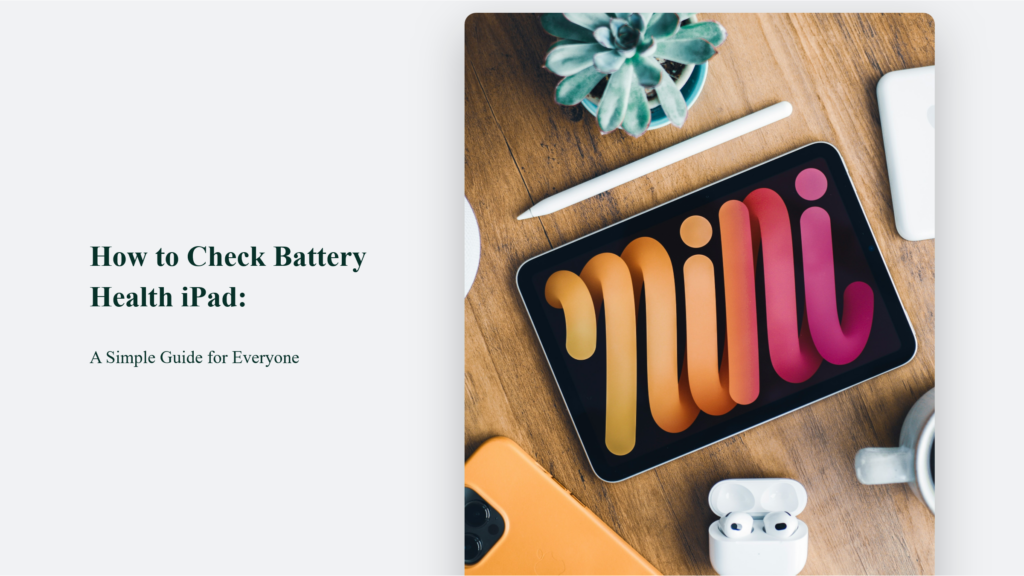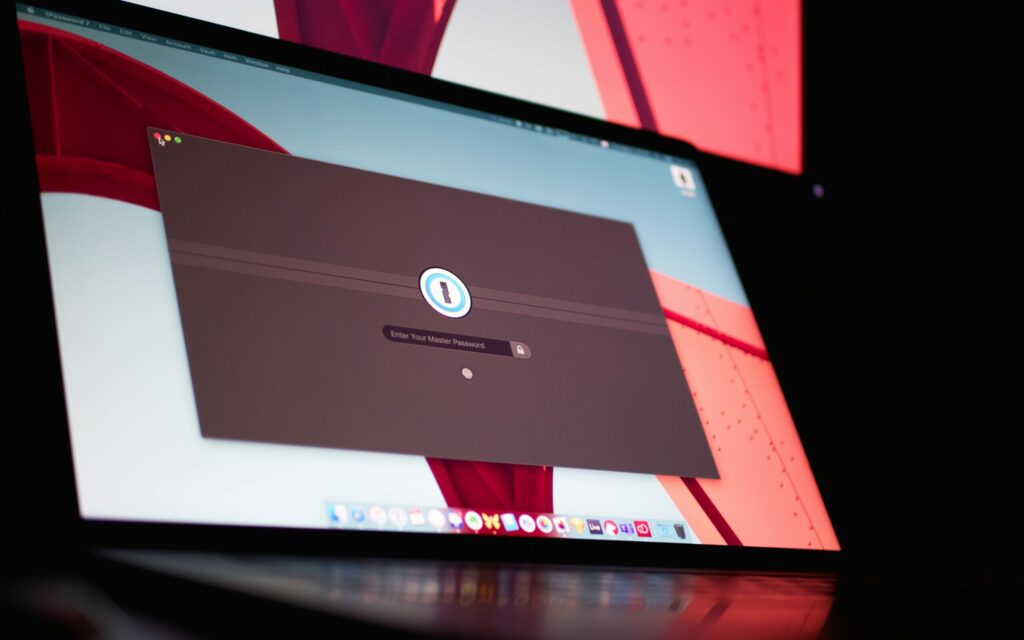In today’s fast-paced world, iPads have become our go-to devices, from attending online classes to watching our favourite movies. Just like us, our iPads also need a health check-up, specifically their battery health. Knowing how to check battery health iPad can save you from unexpected shutdowns and ensure your device serves you longer and better.

Why Check Your iPad’s Battery Health?
Your iPad’s battery is like its heartbeat, and over time, it might not work as well as it used to. Keeping an eye on your battery health can help you avoid sudden surprises like your iPad dying on you when you need it the most. Plus, it’s a great way to determine if you need a battery replacement before the problem gets too big. After all, we all want our beloved iPads to last as long as possible, right?
How to Check Battery Health iPad:
Using Third-Party Apps like iMazing or CoconutBattery
Third-party applications such as iMazing or CoconutBattery offer a window into the soul of your iPad’s battery, providing detailed insights that are otherwise inaccessible through the device’s settings. These applications can display critical data, including the number of charge cycles, the battery’s maximum capacity, and current health status.
- iMazing: Available for both macOS and Windows, iMazing gives a comprehensive look at your iPad’s battery health by simply connecting your device to your computer. It shows the charge cycles and the battery’s effective maximum charge, helping you understand how much your battery’s capacity has diminished over time.
- CoconutBattery: Exclusively for macOS, CoconutBattery reveals the battery health of your iPad (and other Apple devices) by displaying its design capacity, full charge capacity, and cycle count. Additionally, it provides information about the battery’s age and manufacturer, which can be pivotal in assessing its overall health.
These tools are indispensable for those who wish to monitor their device’s battery health closely, offering a depth of information far beyond basic metrics.
Diving into iPad’s Analytics Data
For the tech enthusiast willing to delve a bit deeper, the iPad stores analytics data that, while not straightforward to access, contains information about battery health. Users can find and export specific analytics files by navigating through Settings to Privacy & Security and then to Analytics & Improvements.
Once converted into a text format, these files can be searched for terms like “MaximumCapacityPercent” to reveal the battery’s current health in percentage form.
This method requires patience and tech-savvyness, as it involves sifting through complex analytics data. However, for those curious about the inner workings of their iPad or concerned about their battery’s health, it’s a worthwhile endeavour.
Seeking Professional Assistance
Sometimes, the best approach is the direct one. Apple and its network of authorized service providers offer professional services to assess and, if necessary, repair or replace your iPad’s battery. This option is especially recommended for those who find delving into analytics data daunting or prefer the reassurance of a professional assessment.
While there might be a cost involved, especially if your device is out of warranty, getting your battery checked or replaced by professionals ensures that your iPad remains in optimal condition. It is particularly important for those who rely on their iPads for critical tasks and cannot afford unexpected shutdowns or degraded performance.
Keeping Your iPad’s Battery Happy and Healthy
Ensuring your iPad’s battery remains in peak condition is crucial for prolonging your device’s lifespan. Here, we delve into the best practices for maintaining battery health, backed by insights from various experts and studies.
Avoid Extreme Temperatures
Like most electronic devices, iPads are susceptible to temperature extremes. Their lithium-ion batteries are particularly sensitive to temperatures outside their comfort zone of 62° to 72° F (16° to 22° C). Exposure to temperatures above 95° F (35° C) can permanently reduce battery capacity, while cold conditions can temporarily affect battery life.
Tip: Protect your iPad from direct sunlight or a cold window sill. If your device gets too hot, turn it off and let it cool before using it again.
Mind Your Charging Habits
The way you charge your iPad can significantly impact its battery lifespan. Lithium-ion batteries fare best when kept between 20% and 80% charge. Full discharges should be avoided, as they can strain the battery and reduce its overall lifespan. Contrary to popular belief, charging your iPad overnight is not detrimental, thanks to modern devices’ ability to manage charging cycles effectively.
Tip: Adjust your charging habits to keep your iPad’s battery within the optimal range. Use settings like Low Power Mode to extend battery life.
Update Regularly
Apple routinely addresses battery life and performance issues through software updates. Ensuring your iPad is running the latest version of its operating system can introduce new battery management features and optimizations that enhance overall battery health and efficiency.
Tip: Enable automatic updates in your iPad’s settings to ensure you’re always running the latest software version.
Advanced Tips for the Tech-Savvy
- Calibrate Your Battery: Although less necessary with modern lithium-ion batteries, calibrating your iPad’s battery by fully charging and then discharging it once every few months can help maintain accurate battery health readings.
- Monitor Your Charge Cycles: Every battery has limited charge cycles before its capacity diminishes. Apple defines one charge cycle as using (and recharging) 100% of the battery’s capacity, but not necessarily in one go. Keeping an eye on your charge cycle count can give you a sense of when your battery might start to decline in performance.
The Bottom Line:
By keeping these insights and tips in mind, you can ensure your iPad remains a reliable companion for all your needs. Remember, a little bit of maintenance can go a long way in extending the life of your device.
Frequently Asked Questions:
Can I check my iPad’s battery health directly on the device?
Unfortunately, iPads don’t have a built-in feature to check battery health directly like iPhones. Third-party apps or professional help are your go-to options.
What does a battery cycle count indicate?
A battery cycle count shows how many times the battery has been charged, from 0% to 100%. It helps determine the battery’s age and wear.
Is it expensive to replace an iPad’s battery?
The cost can vary depending on your iPad model and whether you go to Apple or an authorized service provider. It’s a good investment to keep your iPad running smoothly for years.




